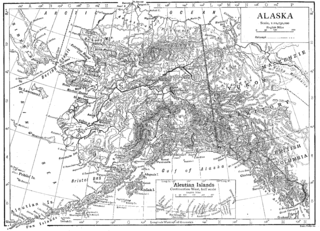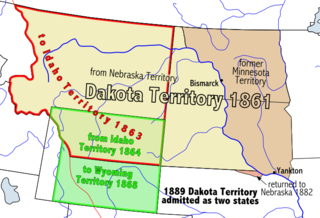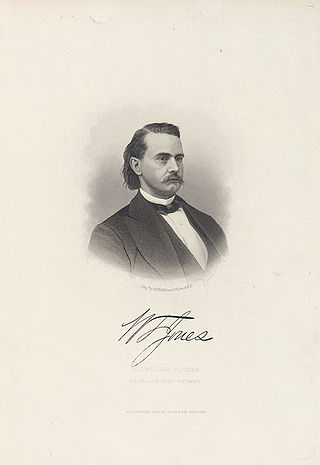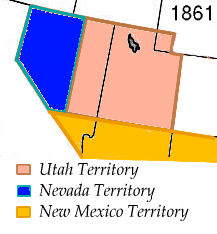
Since Hawaii became a state in 1959, it has sent congressional delegations to the United States Senate and United States House of Representatives. Each state elects two senators to serve for six years. Members of the House of Representatives are elected to two-year terms, one from each of Hawaii's congressional districts. Before becoming a state, the Territory of Hawaii elected a non-voting delegate at-large to Congress from 1900 to 1958.

United States congressional apportionment is the process by which seats in the United States House of Representatives are distributed among the 50 states according to the most recent decennial census mandated by the United States Constitution. Each state is apportioned a number of seats which approximately corresponds to its share of the aggregate population of the 50 states. Every state is constitutionally guaranteed at least one seat in the House and two seats in the Senate, regardless of population.

Since Utah became a U.S. state in 1896, it has sent congressional delegations to the United States Senate and United States House of Representatives. Each state elects two senators to serve for six years. Before the Seventeenth Amendment in 1913, senators were elected by the Utah State Legislature. Members of the House of Representatives are elected to two-year terms, one from each of Utah's four congressional districts. Before becoming a state, the Territory of Utah elected a non-voting delegate at-large to Congress from 1850 to 1896.

The 1868–69 United States House of Representatives elections were held on various dates in various states between June 1, 1868 and August 2, 1869. Each state set its own date for its elections to the House of Representatives before or after the first session of the 41st United States Congress convened on March 4, 1869. They coincided with the 1868 United States presidential election, which was won by Ulysses S. Grant. Elections were held for all 243 seats, representing 37 states. All of the former Confederate states were represented in Congress for the first time since they seceded from the Union.

Joseph Maull Carey was an American lawyer, rancher, judge, and politician, who was active in Wyoming local, state, and federal politics.
At large is a description for members of a governing body who are elected or appointed to represent a whole membership or population, rather than a subset. In multi-hierarchical bodies, the term rarely extends to a tier beneath the highest division. A contrast is implied, with certain electoral districts or narrower divisions. It can be given to the associated territory, if any, to denote its undivided nature, in a specific context. Unambiguous synonyms are the prefixes of cross-, all- or whole-, such as cross-membership, or all-state.

Alaska Territory's at-large congressional district was a congressional district created in 1906 to represent the District of Alaska, which was reorganized into the Alaska Territory in 1912. After Alaska's admission to the Union as the 49th state by act of Congress on January 3, 1959, this district evolved into Alaska's at-large congressional district.

Dakota Territory's at-large congressional district is an obsolete congressional district that encompassed the entire Dakota Territory prior to admission to the Union. The district elected a delegate to the United States Congress.

Oregon Territory's at-large congressional district is an obsolete congressional district that encompassed the area of the Oregon Territory. In 1853, the northern half of the territory was reorganized into the Washington Territory.
The Oklahoma Territory's at-large congressional district is a defunct congressional district that was created by the Organic Act of 1890 and ended with Oklahoma statehood. One delegate was to be sent to the U.S. House of Representatives from Oklahoma Territory.

Hawaii Territory's at-large congressional district was the congressional district for the Territory of Hawaii, which was established by the Newlands Resolution of 1898.

William Theopilus Jones was an American politician, lawyer, and judge who served a single term in the United States House of Representatives, representing the at-large congressional district of the Territory of Wyoming from 1871 to 1873 as a Republican delegate in the 42nd United States Congress.

Iowa Territory's at-large congressional district is an obsolete congressional district that encompassed the area of the Iowa Territory, which was split off from the Wisconsin Territory in 1838. After Iowa's admission to the Union as the 29th state by act of Congress on December 28, 1846, this district was dissolved and replaced by Iowa's at-large congressional district.

Idaho Territory's at-large congressional district is an obsolete congressional district that encompassed the area of the Idaho Territory, which was originally created from parts of the Washington Territory and Dakota Territory in 1863. In 1864, parts of the territory were ceded back to the Dakota Territory and another part was reorganized into the Montana Territory. The boundaries of the territory were changed again in 1868 when the Wyoming Territory was created.

New Mexico Territory's at-large congressional district is an obsolete congressional district representing the New Mexico Territory, which was created in 1850. After New Mexico's admission to the Union as the 47th state by act of Congress on January 6, 1912, this district was dissolved and replaced by New Mexico's at-large congressional district.
Utah Territory's at-large congressional district is an obsolete congressional district that encompassed the area of the Utah Territory. After Utah's admission to the Union as the 45th state by act of Congress on January 4, 1896, this district was dissolved and replaced by Utah's at-large congressional district.

Nevada Territory's at-large congressional district is an obsolete congressional district that encompassed the area of the Nevada Territory, which was split off from the Utah Territory in 1861. After Nevada's admission to the Union as the 36th state by act of Congress on October 31, 1864, this district was dissolved and replaced by Nevada's at-large congressional district.

The United States House of Representatives is the lower chamber of the United States Congress, with the Senate being the upper chamber. Together, they comprise the national bicameral legislature of the United States.
The District of Columbia is a political division coterminous with Washington, D.C., the capital city of the United States. According to the Article One of the Constitution, only states may be represented in the United States Congress. The District of Columbia is not a U.S. state and therefore has no voting representation.























